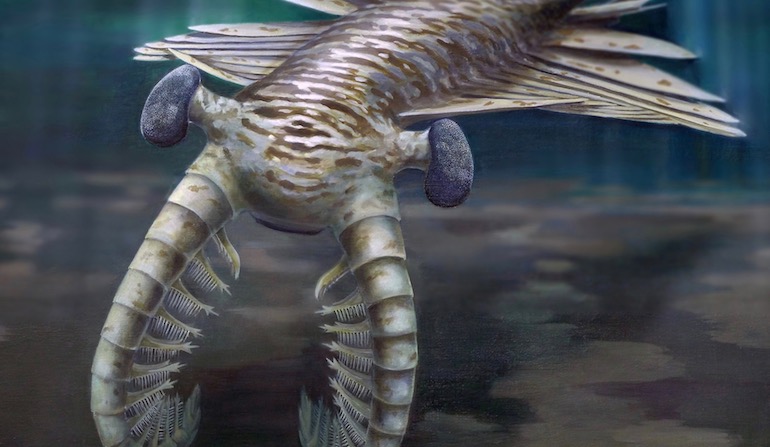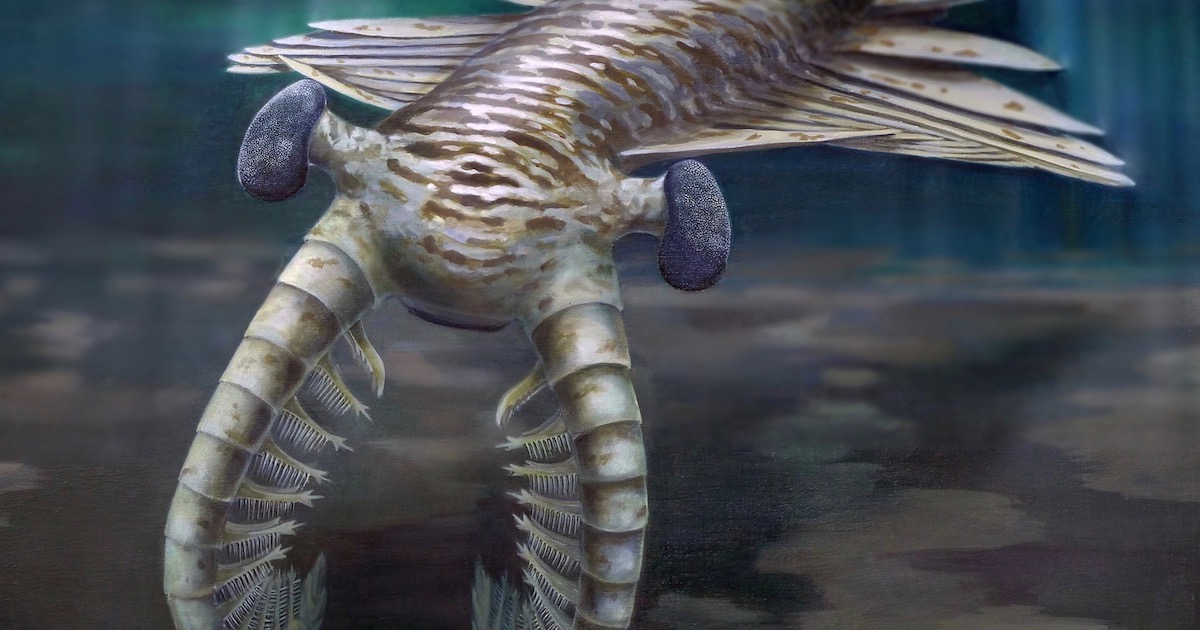 Intelligent Design
Intelligent Design
In Cambrian Explosion Debate, ID Wins by Default


Sometimes you win a game by default. The loser might not acknowledge losing, but fails to show up.
Picture a world champion prize fighter who has command of the media. He hears a challenger who claims to have a knockout punch, but refuses to get into the ring with him. Instead, he runs to the media and tells them there is indeed a big challenge, and it “might” be winnable. That’s it. Reporters run with the story and report, “The Fight Might Be Winnable.” Nothing is said about the challenger or his knockout punch. Question: under these circumstances, who wins the fight?
This is the impression you get reading the mainstream media regarding the debate about the Cambrian explosion. Stephen Meyer offered a big challenge in Darwin’s Doubt, claiming that Darwinian evolution is not only incapable of explaining the Cambrian event, but that the hierarchical information required to explain almost 20 new body plans that appeared suddenly in Cambrian layers gives positive evidence of intelligent design. His challenge was not lost on Darwin proponents. The book created a strong backlash by evolutionists in blogs, but only one Darwinian got into the ring with Meyer, so to speak, but at least by taking on his challenge. That was “heavyweight” paleontologist Charles Marshall, and a gentlemanly interchange resulted. Meyer answered the response by demonstrating that it did not explain the main point: the origin of the information required to create hierarchical body plans (see Debating Darwin’s Doubt, Section III). The challenge stood.
Still Waiting Engagement
The rest of Debating Darwin’s Doubt responded to various critics who had taken potshots outside the ring. None of them defeated Meyer’s challenge. Paul Nelson wrote in Chapter 34, “Still Waiting Engagement”:
Thus, at the end of the day, it really doesn’t matter whether the contemporary evolutionary theorists that Meyer discusses in Darwin’s Doubt are attempting to supplement neo-Darwinian theory, replace it with something fundamentally new, or replace some, but not all, parts of the theory. What matters is whether any of these theories can explain what needs to be explained: the origin of novel animal body plans and the biological information necessary to produce them. [Emphasis added.]
That was in 2015. In the four years since, evolutionists have had plenty of opportunity to “engage” and offer their explanation, yet every paper reported here at Evolution News has simply dodged the issue. They pretend the challenge doesn’t exist. Instead, they mutter among themselves that “the fight might be winnable,” and give the media the impression that Darwin remains the world champion in the heavyweight category of scientific explanation.
The latest is an essay by Michael S. Y. Lee and James B. Dorey in Current Biology, “Evolution: Dampening the Cambrian Explosion.” Lee and Dorey practice all the same old moves that failed before. They rely on two recent papers, one already addressed by Evolution News: the one by Deline et al: and another by Graham Budd, who has been cited several times in these pages, most recently here.
A List of Moves
Here’s a list of the moves in the new Current Biology paper. This is the latest response by Darwinians about the Cambrian explosion. Keep your eye on the right hook (the origin of biological information) and see if they are ready for it.
- The Small Explosion move: “Cambrian diversity was not greater than living diversity — at least for arthropods, the most diverse group of animals then and now.”
- The Soft Touch: Sure, arthropods and vertebrates developed hard parts that accelerated their diversification, but “most phyla have either soft bodies (e.g. annelids, nematodes) or simple and relatively inert skeletons (mollusks, brachiopods), and remain largely confined to aqueous environments.”
- The Distraction: The Burgess Shale Cambrian animals failed to fit into living phyla, but “when viewed from the perspective of the Cambrian explosion, modern birds and beetles would appear even more bizarre.”
- The “Got All Day” feint: “Animal disparity is still increasing, and the extent of post-Cambrian innovation rivals the Cambrian explosion, though admittedly occurring over a longer timeframe.”
- The Promise-to-Fight Later tactic: “more complex phyla indeed have larger genomes” —a result from analysis that “should therefore provide fertile ground for further testing.”
- The Churchill Strategy: “History is written by the victors,” Churchill said. Twisting this principle in support of Darwin, they allege that “focusing only on living taxa can give a very distorted view of the dynamics of evolutionary radiations.” What we see as an explosion might just be an artifact of having only survivors in the record. Darwin was as busy at the beginning as he is now!
- Punch at random: “Budd and Mann further speculate that if speciation rates are correlated with rates of morphological and molecular change — an association which has been much debated — then surviving clades would also exhibit elevated rates of phenotypic evolution and genetic change, again due to chance alone.”
That’s it. Did you see any response to the origin of biological information for new body plans? There’s a lot of punching at the air, and hitting at the soft gloves of the sparring partner. Basically, they reaffirm Darwin as the undisputed champion, even without a fair fight. Here’s the ending paragraph. They acknowledge a big challenge is afoot, but they tell the media not to overestimate it, promising them that “the fight might be winnable.”
While there is little doubt that the Cambrian explosion represented a massive and rapid proliferation of animal forms and lineages, the two studies caution against overestimating its magnitude [i.e., Meyer “might” be a pushover.] The empirical work of Deline and colleagues demonstrates that the Cambrian did not represent the zenith of animal diversity, and that major innovation continues to this day, while the theoretical study of Budd and Mann suggests that elevated rates in speciation at the base of such radiations might be at least partly attributable to stochastic upswings rather than unusual evolutionary mechanisms.
“Innovation” or Chance Miracles?
You can always trust Darwin to be the world champion eventually, they promise. In Darwinspeak, “innovation” refers to chance miracles, like new body plans appearing suddenly. Those miracles evidently happen more quickly in periods of “stochastic upswings” within the “usual evolutionary mechanisms” (you know: sheer dumb luck). Sometimes, by chance, sheer dumb luck runs faster!
Most amusing in this paper is a suggestion that actually handicaps Darwin more. It’s the idea that there might have been even more body plans at the Cambrian that we don’t see! This makes perfect sense — if you believe that blind chance has infinite creative power. Since Darwin is always on the move, they speculate, and since history is written by the victors, the explosive evidence in the fossil record might just be an artifact of what survived. Logical, right? Commenting on the Deline paper, they say:
In a major challenge to the view of unsurpassed Cambrian diversity, all Cambrian fossils fall near (between or within) living phyla: for instance, the famously bizarre Anomalocaris helps link modern velvet worms and arthropods. Thus, at least some gaps between the different body plans of modern phyla are artefacts of extinction of ‘intermediate’ taxa, rather than fundamental evolutionary discontinuities.
How this will help Darwin in the “major challenge” he admittedly faces (Darwin called the Cambrian explosion “the most obvious and serious objection which can be urged against the theory”) is anyone’s guess.
Furthermore, the morphospace occupied by Cambrian forms is much smaller than the morphospace occupied by living forms, even after accounting for non-preservation of soft features in most fossils.
But again, that is not the challenge Meyer makes. It’s about disparity, not diversity. They can call it small, but the morphospace includes at least 20, and up to 30, new body plans, each distinctive, bearing complex systems like muscles, nerves, digestive systems, sensory systems, locomotion, and reproductive systems with no precursors in the Precambrian. They all appear suddenly. Where are the “intermediate taxa”? They are nowhere in the rock record, 158 years after Darwin had hoped they would be found.
So that’s the situation going on six years after Meyer’s challenge. Marshall tried a few practice punches after the book came out, but then left. Bloggers have hooted and hollered from the stands, nothing more. Meyer still stands alone in the ring. He wins by default.
Image credit: Anomalocaris, Katrina Kenny & University of Adelaide/UNE Photos, via Flickr.
